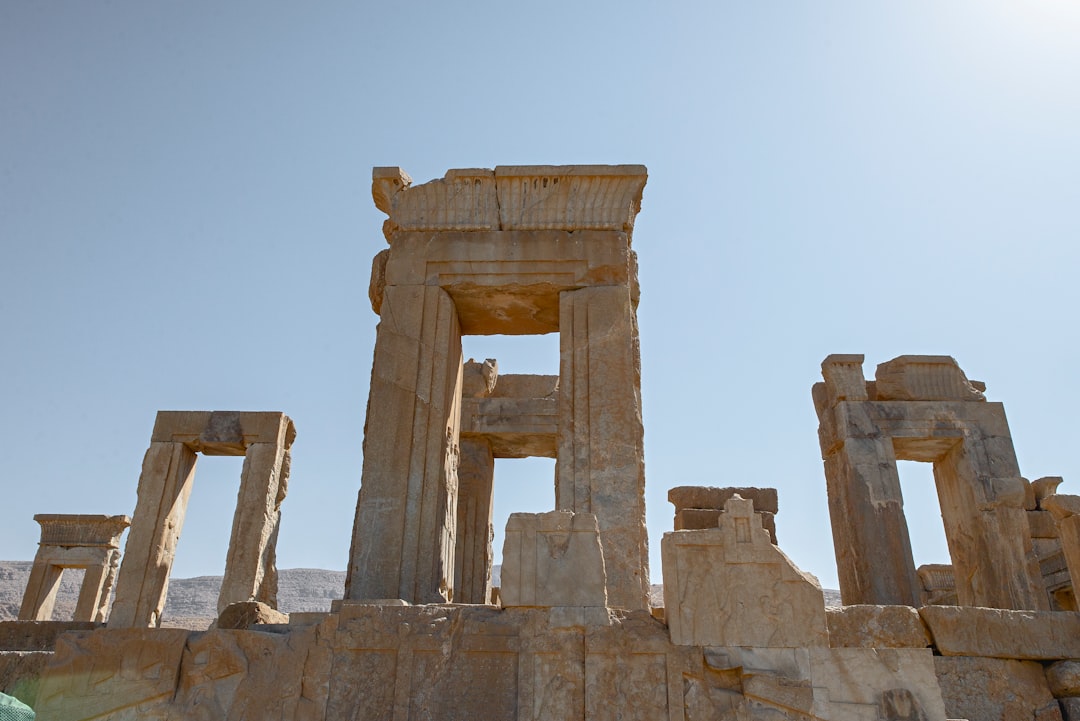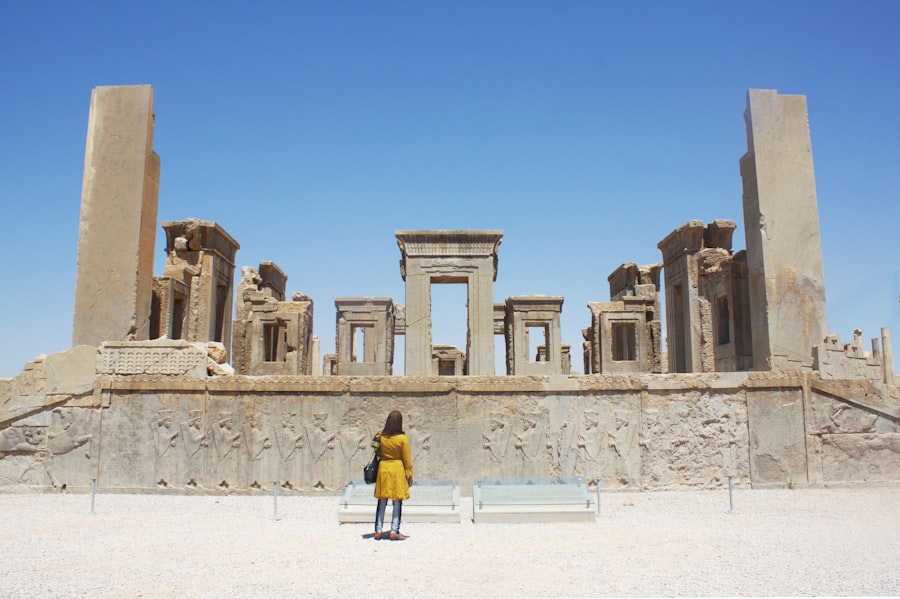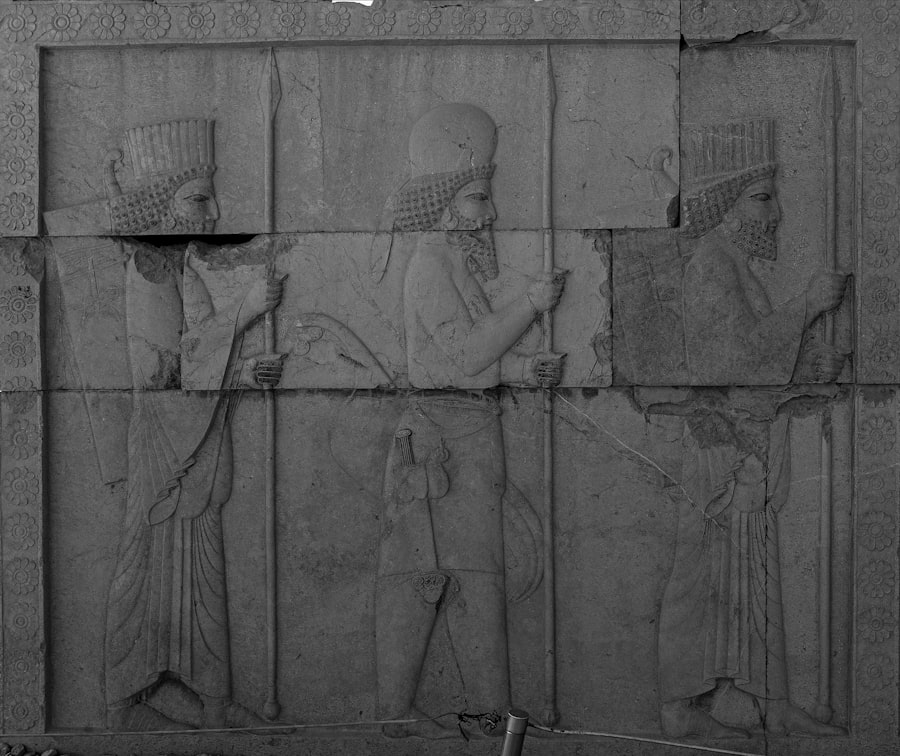
Iran, a country steeped in history and culture, is located in the heart of the Middle East. It is bordered by several countries, including Iraq to the west, Turkey to the northwest, and Afghanistan and Pakistan to the east. The Persian Gulf lies to the south, while the Caspian Sea is situated to the north.
With a population exceeding 80 million, Iran is one of the largest countries in the region and boasts a rich tapestry of ethnicities, languages, and traditions. The official language is Persian (Farsi), and the nation is predominantly Shia Muslim, which significantly influences its cultural and social fabric. The history of Iran dates back thousands of years, with its roots tracing back to ancient Persia.
The Achaemenid Empire, founded by Cyrus the Great in the 6th century BCE, was one of the largest empires in history, known for its remarkable achievements in governance, architecture, and culture. Over the centuries, Iran has experienced numerous dynasties and invasions, each leaving an indelible mark on its identity. Today, Iran is recognized for its contributions to art, literature, science, and philosophy, making it a fascinating destination for travelers seeking to explore its multifaceted heritage.
Key Takeaways
- Iran is a diverse and historically rich country located in the Middle East, with a unique blend of ancient and modern culture.
- Historical and cultural landmarks in Iran include the ancient city of Persepolis, the Golestan Palace, and the Nasir al-Mulk Mosque.
- Iran is home to stunning natural wonders and landscapes such as the Caspian Sea, the Alborz Mountains, and the Lut Desert.
- Must-visit cities and towns in Iran include Tehran, Isfahan, Shiraz, and Yazd, each offering their own unique charm and attractions.
- Unique experiences and activities in Iran include exploring the bazaars, enjoying traditional Persian cuisine, and visiting the ancient ruins of Pasargadae.
Historical and Cultural Landmarks in Iran
Iran is home to an array of historical and cultural landmarks that reflect its illustrious past. One of the most iconic sites is Persepolis, the ceremonial capital of the Achaemenid Empire. Founded by Darius I in 518 BCE, this UNESCO World Heritage Site features grand palaces, intricate bas-reliefs, and monumental staircases that showcase the architectural prowess of ancient Persia.
Visitors can wander through the ruins and imagine the grandeur of royal ceremonies that once took place in this magnificent city. Another significant landmark is the Golestan Palace in Tehran, a stunning example of Qajar-era architecture. This UNESCO World Heritage Site is a complex of palaces and gardens that served as the royal residence for several centuries.
The intricate tile work, mirror mosaics, and lush gardens create a captivating atmosphere that transports visitors back in time. The palace also houses a museum showcasing royal artifacts, paintings, and historical documents that provide insight into Iran’s royal history. In addition to these monumental sites, Iran boasts numerous mosques that exemplify Islamic architecture.
The Sheikh Lotfollah Mosque in Isfahan is renowned for its stunning dome adorned with intricate tile work and calligraphy. Its interior features exquisite mosaics that reflect the artistry of Persian craftsmen. The mosque’s serene ambiance and architectural beauty make it a must-visit for anyone interested in Islamic art and culture.
Natural Wonders and Landscapes of Iran

Beyond its historical landmarks, Iran is blessed with diverse natural landscapes that captivate nature enthusiasts. The Alborz mountain range stretches across northern Iran, offering breathtaking views and opportunities for outdoor activities such as hiking and skiing. Mount Damavand, the highest peak in the Middle East at 5,610 meters (18,405 feet), is a dormant volcano that attracts climbers from around the world.
Its snow-capped summit provides a stunning backdrop against the clear blue sky. The Lut Desert (Dasht-e Lut) is another remarkable natural wonder in Iran. Recognized as a UNESCO World Heritage Site, this vast expanse of arid land features unique geological formations, including massive sand dunes and salt flats.
The Lut Desert holds the record for the highest ground temperature ever recorded on Earth, reaching 70.7 degrees Celsius (159.3 degrees Fahrenheit). Adventurous travelers can explore this otherworldly landscape by taking guided tours or embarking on camel treks to experience its stark beauty firsthand. Iran’s coastline along the Caspian Sea offers a different kind of natural allure.
The lush green forests of northern Iran contrast sharply with the arid landscapes found elsewhere in the country. The region is dotted with charming villages and resorts where visitors can relax by the sea or explore the nearby Hyrcanian forests, which are home to diverse flora and fauna. This area provides a unique opportunity to experience Iran’s natural beauty while enjoying recreational activities such as swimming, fishing, and hiking.
Must-Visit Cities and Towns in Iran
| City/Town | Attractions | Population | Historical Sites |
|---|---|---|---|
| Isfahan | Naghsh-e Jahan Square, Imam Mosque, Chehel Sotoun Palace | 1,961,260 | Naqsh-e Jahan Square, Si-o-se Pol Bridge, Khaju Bridge |
| Shiraz | Persepolis, Nasir al-Mulk Mosque, Eram Garden | 1,565,572 | Persepolis, Pasargadae, Tomb of Hafez |
| Yazd | Yazd Old Town, Jameh Mosque, Amir Chakhmaq Complex | 529,673 | Yazd Old Town, Towers of Silence, Zoroastrian Fire Temple |
| Tabriz | Tabriz Historic Bazaar Complex, Blue Mosque, Azerbaijan Museum | 1,558,693 | Tabriz Historic Bazaar Complex, Arg of Tabriz, Saint Mary Church |
Iran’s cities are vibrant hubs of culture and history, each offering unique experiences for travelers.
The National Museum of Iran showcases artifacts from various periods of Iranian history, while the bustling bazaars offer a glimpse into daily life.
The Azadi Tower stands as a symbol of modern Iran and provides panoramic views of the city from its observation deck. Isfahan is often referred to as “Half of the World” due to its stunning architecture and rich cultural heritage. The Naqsh-e Jahan Square, another UNESCO World Heritage Site, is surrounded by magnificent structures such as the Imam Mosque and Ali Qapu Palace.
Visitors can stroll through the square, admire the intricate tile work, and enjoy traditional Persian tea at one of the nearby teahouses. Shiraz is renowned for its poetic heritage and beautiful gardens. The city is home to the tombs of famous Persian poets Hafez and Saadi, attracting literary enthusiasts from around the globe.
The Eram Garden, with its stunning cypress trees and vibrant flowers, exemplifies Persian garden design and offers a tranquil escape from urban life. Shiraz also serves as a gateway to Persepolis, making it an essential stop for those exploring ancient Persia. Yazd is another gem worth visiting, known for its unique desert architecture and Zoroastrian heritage.
The city’s windcatchers (badgirs) are an architectural marvel designed to cool homes in the arid climate. The historic old town of Yazd features narrow alleyways lined with adobe buildings and offers insights into Zoroastrian customs at sites like the Towers of Silence.
Unique Experiences and Activities in Iran
Traveling in Iran offers a plethora of unique experiences that go beyond traditional sightseeing. One such experience is participating in a Persian cooking class where visitors can learn to prepare authentic dishes like kebabs, saffron rice (chelow), and various stews (khoresh). These classes often take place in local homes or cooking schools, providing an intimate setting where travelers can engage with Iranian culture through its culinary traditions.
Another distinctive activity is exploring Iran’s rich carpet weaving heritage. Persian carpets are renowned worldwide for their intricate designs and craftsmanship. Visitors can take guided tours to carpet workshops where they can witness artisans at work and learn about the history behind various patterns and styles.
Some workshops even offer hands-on experiences where participants can try their hand at weaving their own small carpets. For those seeking adventure, trekking in Iran’s national parks presents an exhilarating opportunity to connect with nature. The Zagros Mountains offer numerous trails that cater to different skill levels, allowing hikers to explore stunning landscapes while encountering diverse wildlife.
Additionally, birdwatching enthusiasts can visit habitats like Lake Urmia or Golestan National Park to observe migratory birds in their natural environment. Cultural festivals also provide an immersive experience into Iranian traditions.
Travelers who visit during this time can partake in local celebrations and witness age-old customs that have been passed down through generations.
Practical Tips for Traveling to Iran

Traveling to Iran requires some preparation to ensure a smooth experience. First and foremost, it’s essential to check visa requirements before planning your trip. Many nationalities need to obtain a visa prior to arrival; however, some may qualify for visa-on-arrival options at certain airports.
It’s advisable to apply for an e-visa through official channels or consult with travel agencies specializing in Iranian tourism for assistance. Understanding local customs and etiquette is crucial when visiting Iran. Dress modestly; women are required to wear a headscarf in public spaces while men should avoid wearing shorts or sleeveless shirts.
It’s also important to be respectful when interacting with locals; greetings often involve handshakes or nods but be mindful of cultural norms regarding physical contact between genders. Navigating within cities can be facilitated by using ride-hailing apps like Snapp or Tap30, which are popular among locals. Public transportation options such as buses and metro systems are also available in major cities like Tehran and Isfahan but may require some familiarity with local routes.
Lastly, learning a few basic phrases in Persian can enhance your travel experience significantly. Simple greetings or expressions of gratitude can go a long way in establishing rapport with locals who are often eager to share their culture with visitors. Engaging with Iranians on their terms fosters meaningful connections that enrich your journey through this captivating country.
In summary, Iran offers an extraordinary blend of history, culture, natural beauty, and unique experiences that make it a compelling destination for travelers seeking adventure beyond conventional tourist paths.
If you’re intrigued by the diverse landscapes and cultural richness highlighted in our article on Iran’s facts, places, and sights, you might also enjoy exploring similar attributes in another part of the world. Consider reading our related article on Colorado’s facts and places to visit. Just like Iran, Colorado boasts a stunning variety of natural landscapes and historical sites that offer a deep dive into the region’s heritage and natural beauty. From the majestic Rocky Mountains to the ancient cliff dwellings at Mesa Verde, Colorado provides a captivating journey through nature and history.
FAQs
What are some interesting facts about Iran?
– Iran is home to one of the world’s oldest civilizations, with a history dating back to 3200 BC.
– It is the 18th largest country in the world, covering an area of 1,648,195 square kilometers.
– Iran is the world’s 17th most populous country, with a population of over 83 million people.
– The official language is Persian, and the currency is the Iranian rial.
What are some popular places to visit in Iran?
– Persepolis: An ancient city that was once the capital of the Achaemenid Empire.
– Isfahan: Known for its stunning Islamic architecture, including the Imam Mosque and the Ali Qapu Palace.
– Shiraz: Famous for its beautiful gardens, poetry, and wine.
– Tehran: The capital city, home to the Golestan Palace and the National Museum of Iran.
What are some must-see sights in Iran?
– The Nasir al-Mulk Mosque in Shiraz, also known as the “Pink Mosque” for its stunning pink tiles and stained glass windows.
– The ancient city of Yazd, known for its well-preserved mud-brick architecture and windcatchers.
– The Caspian Sea, a popular vacation spot for Iranians and a beautiful natural attraction.
– The Naqsh-e Jahan Square in Isfahan, a UNESCO World Heritage site and one of the largest city squares in the world.



